To no one’s surprise, volatility has returned in a big way, and if the typical market playbooks of the past 30 years continue to work, then what we have seen regarding the yen carry trade to this point may only be the beginning.
These things do not just conclude because the deputy governor of the BOJ makes some vague comments about not hiking rates during market volatility. First, the comments carry no weight and can hardly stabilize the yen over the long term because unless the market is going to stay volatile for the rest of its eternity, at some point, the BOJ will have the chance to hike rates if needed.
Secondly, anyone with some common sense knows that it wouldn’t be a smart move if the BOJ started hiking rates at the same time the Yen was strengthening, and the Nikkei was tanking. Where the BOJ messed up was that wait too long for the second rate increase and should have done it sooner when it wasn’t clear when the Fed would start cutting rates.
Instead, they waited until the US data began to soften, and to add insult to injury, they intervened in the market on July 11, the day of the weak US CPI; they kicked this whole carry trade unwind into gear.
Yen Carry Trade Unwind May Resume - Here's Why
The idea here is that if the US data continues to suggest the Fed is going to cut rates and as interest rate spreads contract; we will continue to see the unwind of the carry trade as the Japanese yen appreciates versus the dollar.
At this point, the only thing stopping the yen’s strengthening is robust US data or if the BOJ decides to cut rates. Weak US data will continue to cause interest rate spreads to contract, further appreciating the yen.
On top of the yen carry trade unwinding, it seems clear that liquidity in the market has vanished (there’s not much money moving around). Even with the rally on Thursday and Friday, the top-of-the-book and bid-ask spreads in the S&P 500 are an inch deep and a mile wide (the gap between what people want to buy and sell is enormous).
There is no liquidity (not enough money in the market). That is a warning sign for the market because this market isn’t going higher unless liquidity rebuilds and those spreads narrow (if more money doesn’t come in and those gaps don’t get smaller).

Additionally, FINRA (which is the organization that watches over how people trade stocks) has reported that margin levels (the money people borrow to buy more stocks) have hit a “brick wall.” In July, the total amount of borrowed money was $810.8 billion, which is pretty much the same as in May and June.
So, if the “liquidity train” (or the flow of money) from the Yen carry trade is gone, and brokers (the people who lend money to traders) aren’t lending more, then where is the money going to come from to keep the market moving?
Meanwhile, the money from the Bank Term Funding Program is set to start rolling off significantly over the remainder of 2024. Up until now, it has been relatively predictable to estimate.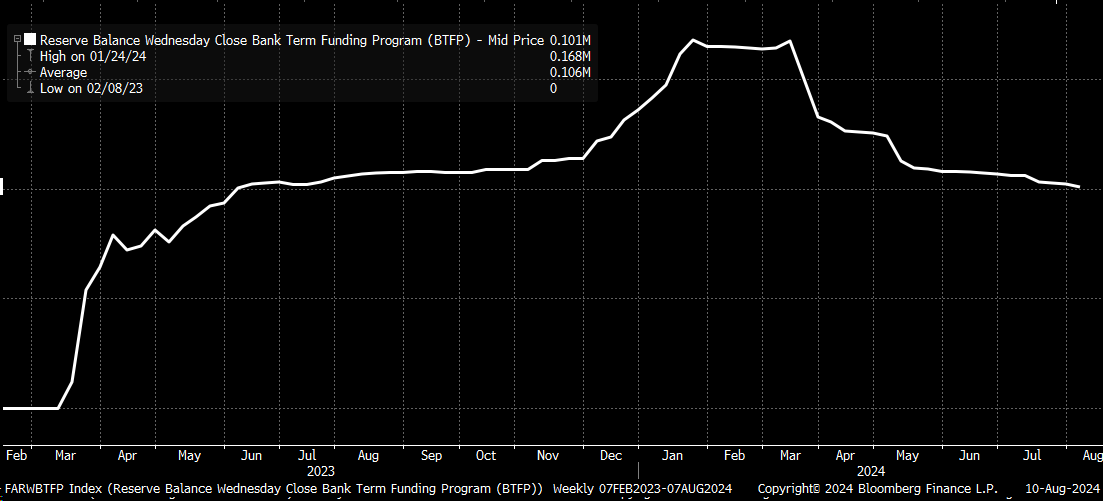
That means the reserve balances held at the Fed are about $100 billion less than the current value of $3.375 trillion.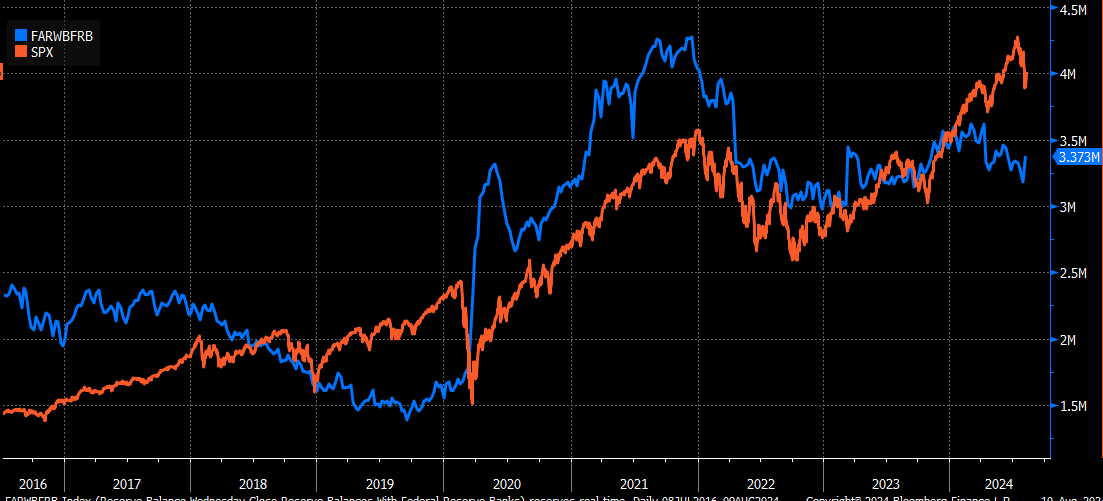
It’s probably not a coincidence that margin balances (the money traders borrow to invest) have stopped rising while reserve balances (the money banks keep at the Fed) have steadily fallen.
The same thing happened in 2018 when reserve balances dropped, and margin balances peaked and then went down. This led to a significant period of volatility, and the market didn’t go anywhere from January 2018 until October 2019.
So, with the yen carry trade unwinding (which means less money flowing in) and margin levels not increasing (traders aren’t borrowing more), we need to consider where the money will come from to push the stock market higher - and that’s not clear.
The S&P 500 seems more closely linked to changes in margin and reserve balances than the Japanese Yen Carry Return Index. But it’s likely to be even more challenging if the carry trade liquidity is drying up and reserve balances and margin levels are also decreasing.
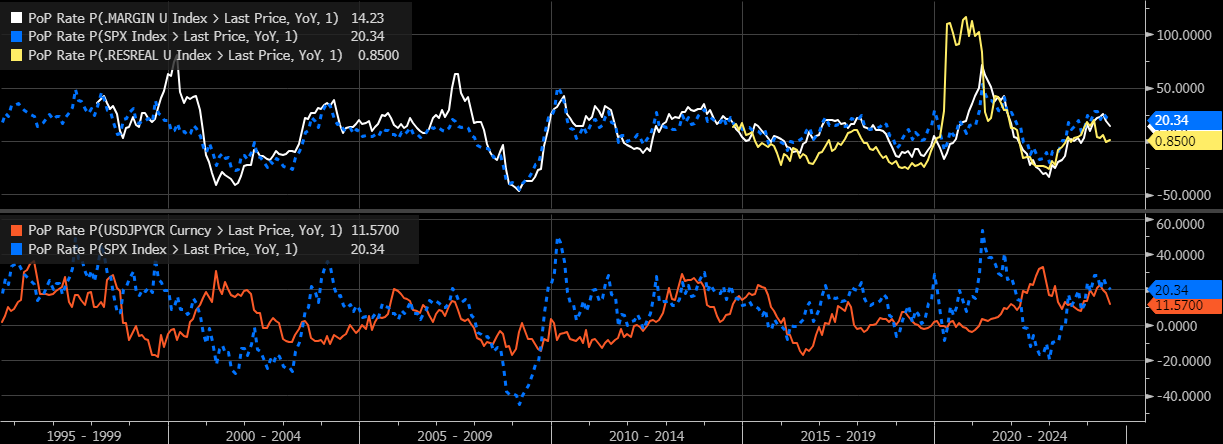
S&P 500, Nikkei, Semiconductors: Technical View
In the meantime, it looks like the S&P 500 futures have formed a bear flag pattern with a smaller rising flag inside it. Usually, a flag pattern that slopes upward leads to lower prices, and the overall bear flag also suggests prices might drop.
Meanwhile, the Nikkei 225 has mostly filled the gap from last Monday’s drop and hasn’t done much else. The big question is what happens next because if the Nikkei starts falling again, it could be a bad sign for markets worldwide.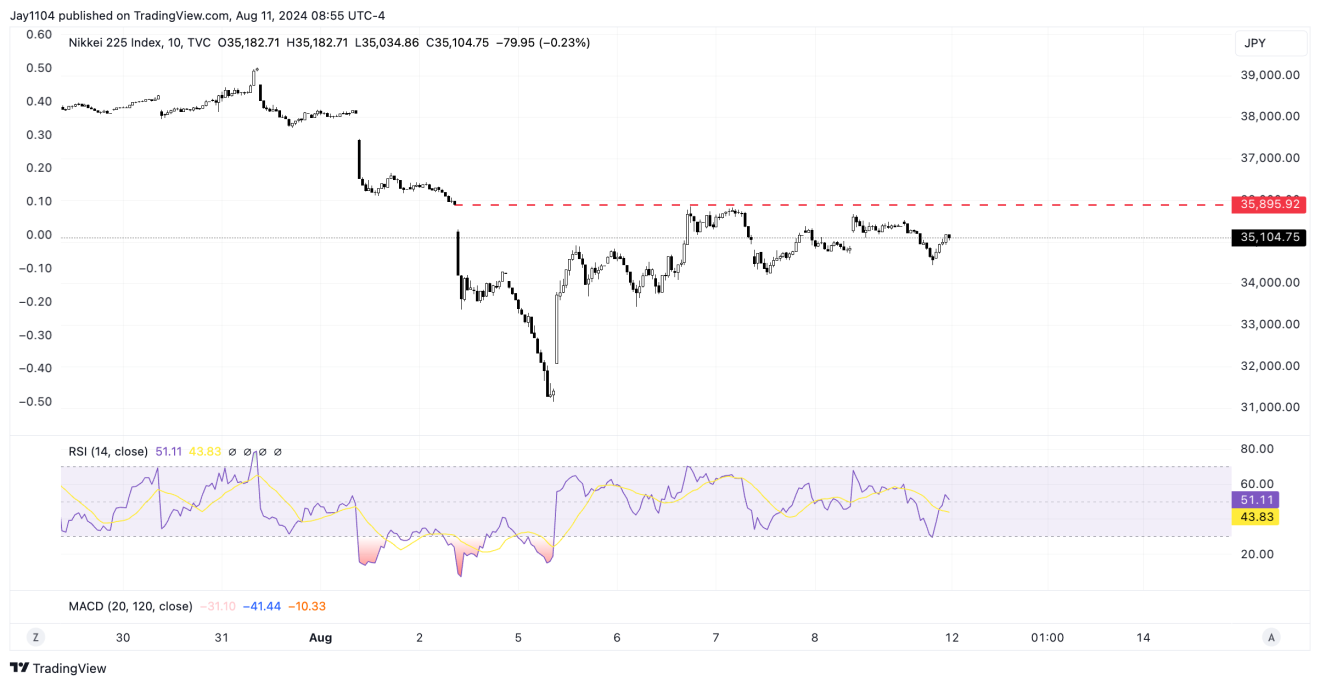
Interestingly, if you flip the Nikkei chart upside down, it looks like a bullish pattern. A trend line has broken, and there’s a big gap to fill around the 31,400 level.
The issue is that this gap is nearly 10% below where the Nikkei closed on Friday.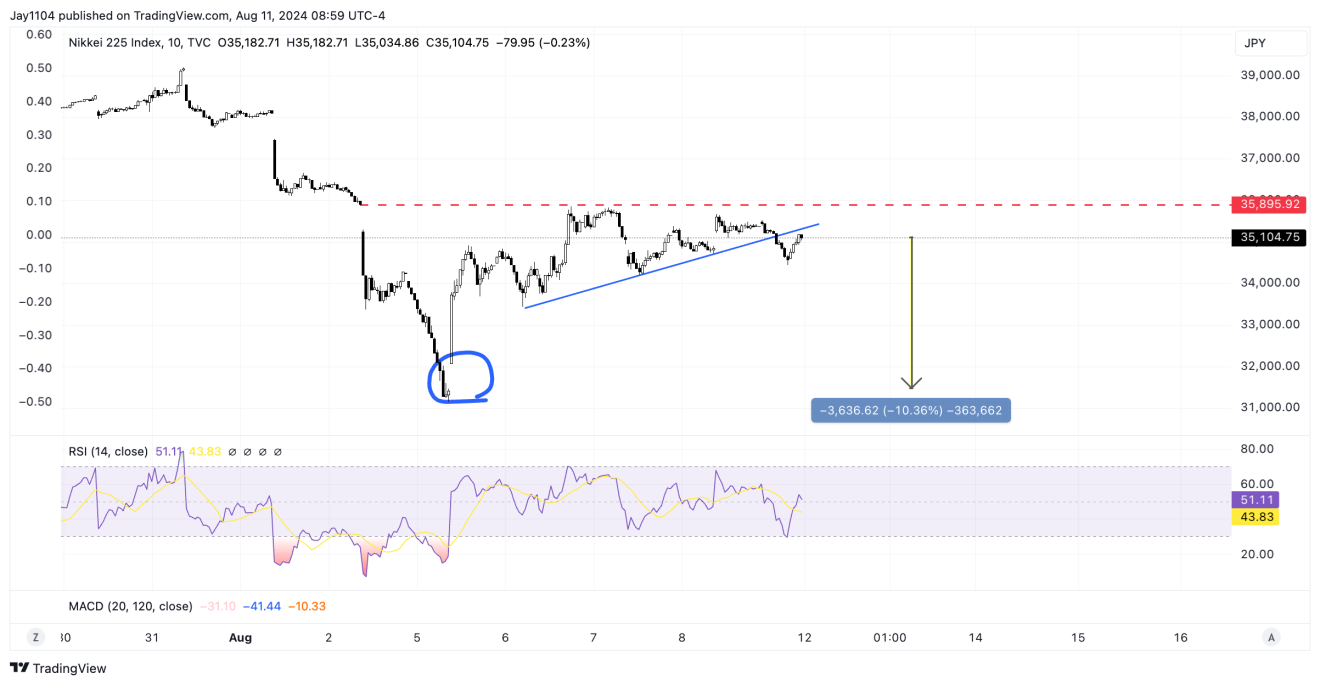
The patterns in the SMH (Semiconductor ETF) also look concerning, with what seems to be a bear pennant forming. The tricky part is that SMH could rise to around $230 and stay within this pattern, so it might take a few days to see how it plays out at the start of next week.

